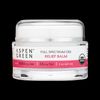You most likely schedule a massage to float into a euphoric state of relaxation and get some relief from tight muscles, pain, or injury. However, as part of the healing process, you may feel some degree of muscle soreness or tightness afterward.
Just as you may feel sore after a workout, massage can stimulate areas of your body that you haven’t targeted recently. If you’re feeling pain in a certain part of your body, you may unconsciously ignore this spot, which can cause tension. A massage can highlight areas of your body where you’re holding on to tightness.
Certain types of massage, such as deep tissue, are more likely to cause post-massage soreness. If you’re super sensitive, have a lot of pain or tension, or simply want to avoid feeling sore afterward, opt for a massage that uses a light, gentle pressure.
Read on to learn more about why you may feel sore after a massage, how to minimize discomfort, and the different types of massage available.
It’s normal to feel sore after a massage. After stimulating muscles that you may not usually use, you might experience delayed onset muscle soreness. This is a physical response to the inflammation as your body heals.
This can happen if your muscles aren’t accustomed to massage. In the same way that your body gets used to working out, your muscles need time to get used to being manipulated in certain ways.
You may experience inflammation and soreness in areas that need healing. If you have neck pain after a massage, for example, it can be a sign that you carry a lot of tension in that area. You may have limited flexibility and mobility in your neck due to working at a desk or bending forward repeatedly.
If you haven’t had a massage recently or if it’s your first one, it’s more likely that you will feel sore afterward. Your body will create muscle memory if you have frequent massages, so aim to be regular with your sessions when possible.
Usually, any post-massage soreness will subside within a day or so. In the meantime, there are several ways to relieve soreness.
1. Stay hydrated
Drink plenty of water before and after your massage.
Avoid alcoholic, sugary, and caffeinated drinks. Along with water, opt for healthy options such as coconut water, fresh fruit or vegetable juice, or herbal teas.

Liquid I.V. Hydration Multiplier

Nuun Sport Hydration
2. Stretch it out
Following your massage, do a few gentle stretches on your own. This helps release muscle tension, improve flexibility, and improve circulation. It’s also a great way to tune into your body, alleviate stress, and quiet your mind.
3. Heat therapy
Warm your body up to promote relaxation. Take a hot shower or go to the sauna. Add baking soda or Epsom salt to a bath and soak for up to 30 minutes. You can also use a heating pad or hot rice bag on any painful areas for up to 15 minutes at a time.

Comfytemp Weighted Heating Pad for Neck and Shoulders

Dr. Teal's Pure Epsom Salt Soaking Solution
4. Essential oils
You can also use essential oils for pain relief. Add a few drops to your bath or shower or use a diffuser. Or, you can combine essential oils with a carrier oil for topical application or to use in a compress.

Nature's Truth Lavender Essential Oil

Plant Therapy Oregano Essential Oil
5. Topical treatment
Applying a muscle rub or CBD lotion is also a great way to administer self-massage a few times per day. You can spend a few minutes applying the ointment while giving yourself a mini-massage in the process.

Aspen Green Relief Full Spectrum CBD Exfoliating Balm

Cornbread Hemp CBD Lotion, Menthol Formula
6. Herbal relief
There are several herbs that may stimulate muscle relaxation and reduce inflammation. You can take them as a capsule, tincture, or tea.
Some herbal options include:
- turmeric
- clove
- black pepper
- ginger
- cinnamon
- garlic
- cayenne

CBDfx Turmeric & Spirulina CBD Gummies

Persona Nutrition Ginger Extract
7. Rest
Take time to rest and recharge. If you can, build in time to rest after your massage. Elevate your feet and legs with pillows and take some time to listen to your favorite music, read a book, or sleep.

Brentwood Home Zuma Foam Wedge Pillow

Casper Glow Light
8. Guided meditation
Lie on a cushioned mat or bed and listen to a mindfulness recording. This could take the form of a guided meditation, a body scan, or yoga nidra. Check in with your body and notice where you can release tension.

Catty Press Mindfulness Coloring Book
9. Cold therapy
Use an ice pack on any painful areas for 15 minutes at a time a few times per day. Or, take an ice bath to relieve inflammation, alleviate soreness, and boost blood flow. To target a small area of the body, you can use a small container of ice.
There are several types of massage to choose from, all varying in pressure and intensity. This makes it easy to find at least one type that you enjoy and is most suitable for your goals and needs.
Swedish massage is one of the most common types in the Western world. Often referred to as classic massage, this gentle technique focuses on relieving muscle tension and promoting relaxation. Other options include aromatherapy, shiatsu, and hot stone.
Deep tissue massage uses stronger pressure and may cause more soreness. It’s often used in people who have injuries or chronic pain. Trigger point, tuina, and sports massage are also options that use stronger pressure.
It’s important to establish open communication with your therapist. Before your appointment, talk to them about any concerns you have regarding your body and discuss the pressure you prefer.
Your therapist will check in during the massage, but if you feel uncomfortable or want them to try a different pressure, speak up. The massage shouldn’t feel painful at any time.
Let your therapist know if there are any places you want them to use a different type of pressure on or avoid altogether. Voice your intentions for the massage. A massage to relieve deep muscle knots will be quite different from a massage to stimulate relaxation, so keep this in mind.
It’s also important to let your therapist know if you have any medical concerns or injuries.
See your doctor if you have neck or back pain after a massage or on an ongoing basis, especially if you’re unsure of the cause. If you experience pain that’s severe or long lasting, it could be due to an underlying condition or untreated injury. Either way, it’s important that you have a consultation to decide upon the best treatment plan.
Talk to your doctor about massage options if you:
have cancer - are pregnant
- have burns or wounds
- have a fracture
- have a bleeding disorder
- take blood-thinning medications
- have severe osteoporosis
- have severe thrombocytopenia
- have deep vein thrombosis
If you experience soreness after a massage, rest assured that it’s a normal occurrence. Continue to improve your well-being and reduce soreness by taking care of yourself after each massage.
Get massages on a consistent basis in order to maximize the benefits and minimize the discomfort. Experiment with different types, pressures, and massage therapists to find the best fit for your goals and needs.


